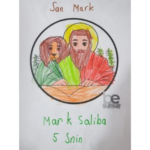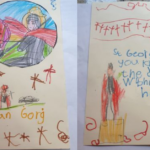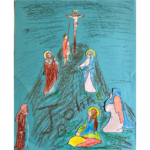
St. Philip and St. James share a feast day! They are not brothers, not even relatives, but both of them were called by Our Lord Jesus Christ to follow Him. And they did, becoming two of his twelve apostles. It is believed that the reason they share a feast day is because in May 560 AD their relics were brought to Rome at the same time and placed in the same basilica dedicated to them.
St. Philip was a fisherman, hailing from Bethsaida, a fishing town on the Sea of Galilee. It is believed that Philip was a follower of John the Baptist who had been preaching and stating that Jesus was “the Lamb of God.” Jesus had already called Peter and Andrew when He saw Philip. He looked at him and told him, “Follow me” and Philip did just that!
He looked out for his friend Nathaneal and enthusiastically declared that he had found the One that fulfilled the Jewish prophecies. When Nathaneal sounded sceptical Philip just said “Come and See.” He did and he too became one of the Twelve.
It is very likely that Philip spoke Greek so it was him that members of the Greek Community in Bethsaida approached to introduce them to Jesus. That is what he did through Andrew.
Philip was the main character in the event of the miracle of the feeding of the five thousand with the two fishes and five loaves of bread. He was asked by our Lord to find ways and means to feed the crowds!!(Jn.7, 5-7)
However, one starts to wonder whether Philip had really understood the teaching of Our Lord when just before His Passion he asked Our Lord to show them the Father. (Jn.14,8)
Philip is also mentioned with the other Apostles in the Upper Room waiting for the coming of the Holy Spirit. Tradition holds that after that experience, together with his sister and the other apostle Bartholomew, he left Jerusalem and preached Jesus Christ in Greece, Syria and Phrygia.
During the persecution of Christians under the Emperor Domitian, he was crucified upside down at Hierapolis.
It is believed that St. James was the son of Alpheus and that his mother Mary was a close relative of the Blessed Virgin. According to the Jewish custom, because of this close relationship to Our Lord he is referred to as ‘the brother of the Lord’. He was brought up in ‘a pious Jewish home’ knowledgeable of the Scriptures and observing the Mosaic Law. He is also referred to as ‘James the Less’ to differentiate him from another apostle, James, the son of Zebedee and brother of John the evangelist. It is probable that he is referred to as ‘the Less’ either because he was shorter or younger than the other James!
Together with his brother Jude he was called to be one of the twelve apostles who followed Our Lord witnessing his teachings and his miracles, also becoming a witness of His Resurrection.
After the Ascension, when the Apostles set out as missionaries, James stayed in Jerusalem becoming the first bishop there. In this role he presided at the Council of Jerusalem in 50AD, when he gave direction regarding the Mosaic Law by the Gentile Christians, that is, those who were becoming Christians but not being Jews. He also met St. Paul who three years after his conversion, went up to Jerusalem and met with St. Peter.
James the Less is also called ‘James the Just’ ‘for his great holiness’ ‘given to prayer , devoted to the poor.’ Traditionally he is attributed the authorship of the Epistle of James included in the New Testament, where he states that our faith needs to be expressed in the actions of our daily lives.
Eventually he was martyred by the Jews in 62 AD.












